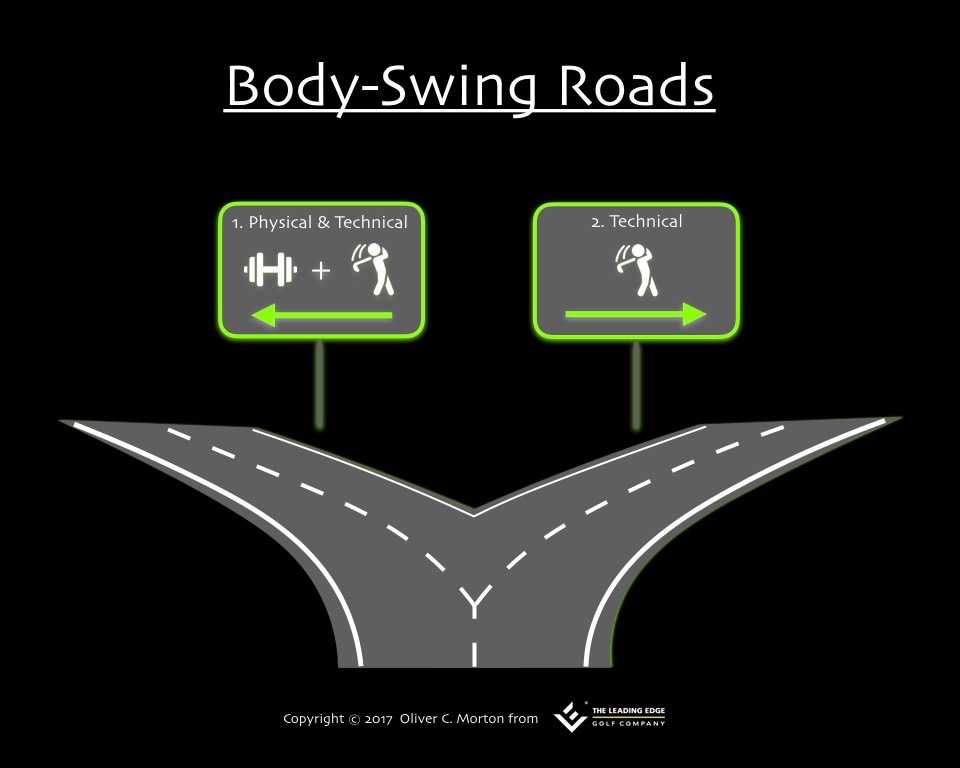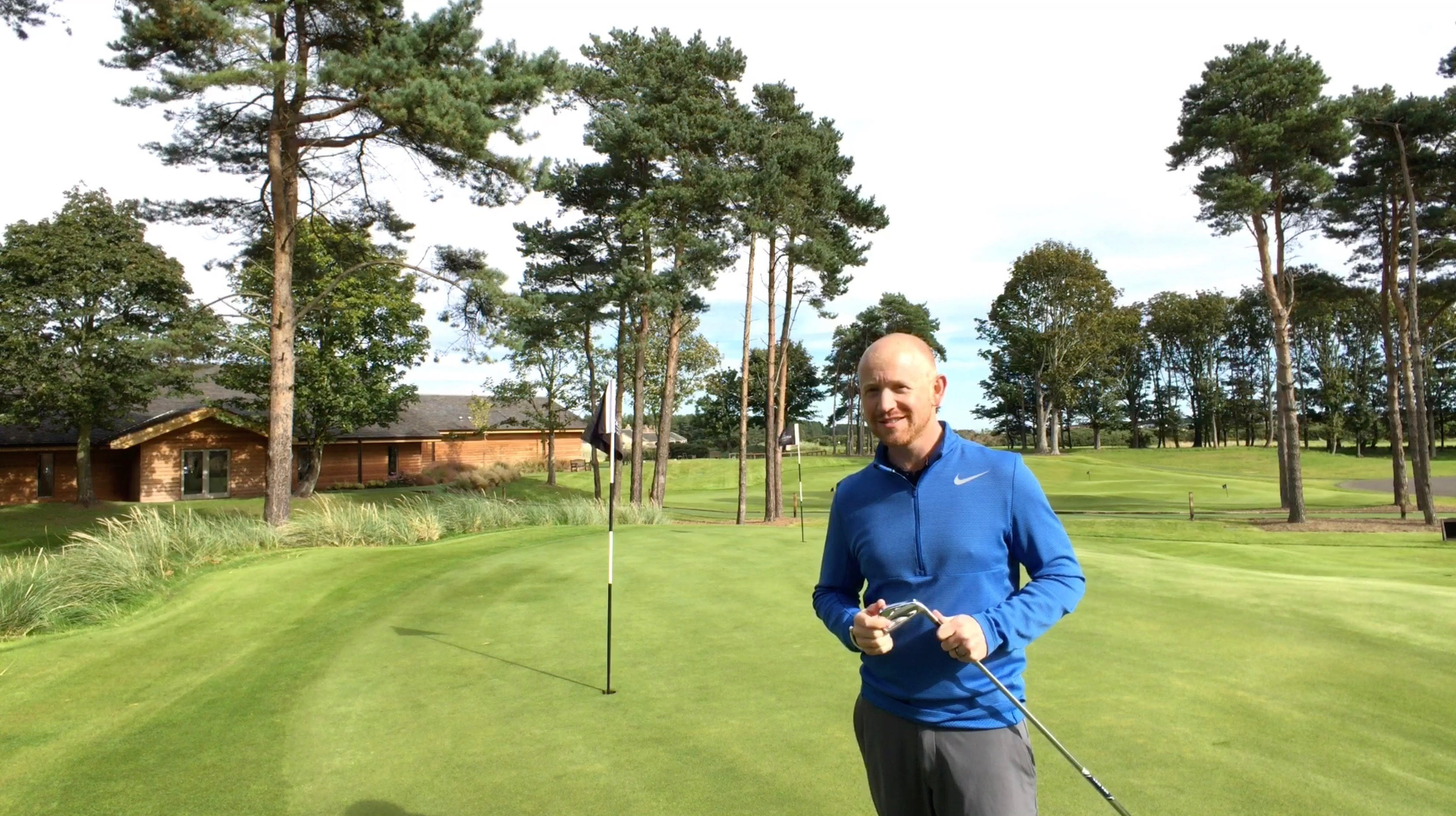IMPROVE MY GAME
Articles
Making Technical Changes To Compensate For Limited Hip Mobility
Mon Oct 9, 2017 by Oliver Morton
As Golf Coaches, we’re often guilty of looking at Technique through a narrow lens i.e. Simply looking at someone's technique/swing characteristics without considering other factors. Below I've identified other influences I feel should be considered before implementing a technical change:

In the video below I illustrate how one of these influences, physical characteristics, has a major influence on a golfers technique:
Case Study Series 1, Episode 3: The Body/Swing Connection from Oliver C Morton on Vimeo.
I believe good coaching begins with a thorough analysis - if you don't know where you are how are you going to get to where you want to go?
In this case, my analysis was a combination of the TPI Level 1 Screen and shot data from various pieces of equipment my Home Base (The Archerfield Performance Centre) possesses i.e. GEARS 3D, TrackMan & a SAM BalanceLab (Pressure Plate).
As you’ll see in the video, the results of my analysis indicated:
- Limited Left Hip & Ankle Mobility
- A Variable Angle of Attack

It's important to mention we don't screen because we believe every swing characteristic is caused by a physical limitation, we screen because we want to know whether or not the body is part of the problem - to ensure we're not advising a player to do something technically that's physically difficult or impossible for them to do.
When we connect a physical characteristic with a technical issue I believe there are two 'Roads' a Player can go down to help them play better:

1) Physical & Technical: A Simultaneous Movement & Technical Improvement Strategy
2) Technical: Coach Around the Physical Characteristic
That’s not to say they have to stay on that Road forever, but the chosen Road is dependent on various constraints e.g. time, finance, interest etc.
I recommend taking Road 1 when and if possible because it elevates your possibilities and reduces your risk of injury. If you're a competitive golfer, ask yourself: “what’s my competition doing?"
As you'll see, this Gent chose Road 2, so I had to come up with simple ways of working around his limited mobility through a technical change.
I recommended:
1. Turning his left foot open/out by 20 degrees
2. The K-Stick Pop/Reverse Club Exercise
By getting him to throw the tennis ball/butt of the club into the ground it helps him generate more ground reaction force because he shifts his balance/pressure into his left foot, extends his left leg and lifts his pelvis; leading to a reduction in his angle of attack variability and more frequent optimal launch conditions. Turning his left foot out reduces the effect of the limitation, making the movement easier.
The importance of pushing into the ground shouldn't be underestimated. One of the best instructive examples of how and why golfers use the ground to generate distance comes from one of the most successful players on the PGA TOUR in 2017, Justin Thomas. TPI instructor Mark Blackburn and Sasho MacKenzie go into this in more depth here for BodiTrak. In short, Justin pushes hard into the ground by extending his left leg on the downswing which lifts his lead hip, allowing him to achieve large amounts of ground reaction force that he’s able to convert into club head speed, an upward angle of attack and minimal spin. Sound familiar 😉?
To finish, I think it's worth mentioning why I recommended practicing away from ‘hitting balls’. I read a book “make it stick: The Science of Successful Learning” by Peter Brown et al; which inspired me to look into different strategies of how to facilitate learning. This was one of them.
I've found it to be an extremely effective way of helping players change their movement patterns for a few reasons:
- It makes it easier for Players to place 100% of their attention/focus through their senses, creating something they can use when playing.
- Reduces negative feedback (e.g. hitting the ball poorly), increasing their commitment to the strategy.
- Removes practice ‘Barriers’ (lack of facilities/time/finance/poor weather etc) - players can implement the strategy uninhibited at home or in the gym.
While it’s not been long since he adopted these strategies, his feedback has been extremely positive. He’s experiencing better contact and reduced dispersion. Positive trends 😀!
That just leaves me to say many thanks for reading the article and watching the video. I hope you found it interesting and gleaned something that might elevate your Play and/or Coaching.

Oliver Morton is based at The Archerfield Performance Centre and is the Founder of The Leading Edge Golf Company. He specialises in Junior and Holistic Golf Coaching. His expertise covers the entire spectrum of development, working with Juniors as young as 5 to Major Champions and Ryder Cup Players. He's also enjoyed a healthy Speaking Career. Sharing his knowledge on platforms such as the UK Golf Trade Show and The PGA National Training Academy at The Belfry. Follow him Socially for more great content and/or to arrange Coaching/Speaking Sessions:
Twitter: @ChangeTheGame54
Instagram: @ChangeTheGame54
Facebook: The Leading Edge Golf Company
YouTube: The Leading Edge Golf Company
Vimeo: Oliver C. Morton